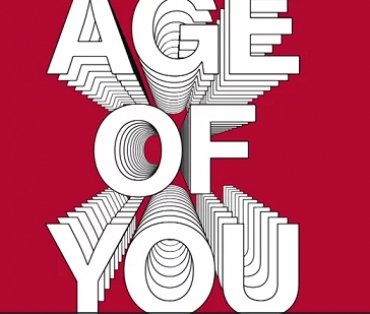

It’s sometimes hard to appreciate the power of a historical moment. An era isn’t always defined by one seismic event, but sometimes by a thousand little tremors shaking-and reshaping-the world.
We are living in such a moment, quite literally on the cusp of a new age. As futurist David Brin theorized in late 2013, each century effectively begins in its 14th year. However dominant influences and technology from the previous century appear to be, new elements come to the fore and shift the mood. The arc of the rising century becomes perceptible. If that is so, then 2014 is no ordinary year.
For those of us in business, it may well be a pivot point-a time to pause, connect the dots, gain a broader view, and align our visions and our plans with the unstoppable currents carrying us forward.
But what are those currents? Which great advances and ideas have already set the future of business in motion? That is what we are going to explore in this 2014 edition of Best Global Brands.
But, first, we need to understand the nature of the moment we sit in as well as the history that has brought us to where we are now.
Horses and cars
In the early 20th century, life was changing at a pace never-before seen. From the introduction of electricity, indoor plumbing, and refrigeration to washing machines, telephones, and life-saving medical breakthroughs, modern progress was raising the standard of living on all fronts. And then there was the development that turbocharged modern civilization’s ascent: the automobile.
For thousands of years, the most efficient mode of transportation usually involved a horse. By revolutionizing mobility, the car made things possible that simply weren’t possible before. People now had more freedom to choose where they could live, where they could work, who and what they saw-and how often. It ignited a desire to travel, to explore. The car moved us collectively from a limited, static state of being to a more dynamic, expansive one. It catalyzed an evolutionary leap.
But did people at the time perceive it that way? When the car emerged, were they aware of its profound implications for society? Probably not. If they weren’t, it was because the transformation, though rapid from a historical standpoint, was gradual-and the new, for a time, still mingled with the old. Yet, among the most perceptive, there was surely a moment, a “horses and cars” moment, when the trajectory of the future and magnitude of the oncoming cultural shift became evident.
In this transitional space, a period when horses and cars coexisted on city streets, a torch was passed. The long agrarian epoch that had defined and governed human life for so long was coming to a close, and a completely new chapter in human experience was about to begin.
The shifting of the ages
Given the rapidity and immensity of the changes we’ve witnessed since the dawn of industrialization-and the degree to which these changes altered the way we began to live and do business at various points-our modern era can be divided into distinct periods of time marked by distinguishing features and events. Through the lens of branding, we at Interbrand have determined four ages that have defined and reshaped business: the Age of Identity, the Age of Value, the Age of Experience, and the forthcoming Age of You.
Many of us in business know that the term “branding” referred originally to a crude mark of ownership, literally burned into the hides of cattle. While this is an interesting bit of trivia, it also gives us some perspective and helps us realize just how far the art and science of branding has come and how sophisticated it has grown.
In the post–World War II era, this mark of ownership evolved into a powerful symbol of differentiation and identification in the period we refer to as the Age of Identity. Mass communication media like TV, radio, and widely circulated print material that characterized this age elevated the status and significance of brands among both consumers and business owners. Here is where a relationship was cemented, trust was built, and a symbiotic evolutionary process began to accelerate. In the Age of Value, beginning in the late 1980s, quantifying the intangible aspects of branding proved beyond a shadow of a doubt that brands had concrete value-and that leading companies needed to take these business assets seriously.
As products and services multiplied exponentially and businesses gained a deeper appreciation of the role brands play in delivering satisfying and differentiated experiences to consumers, a new age-the Age of Experience-was under way. But coinciding with these deeper realizations about the importance of experience was the emergence of a phenomenon that would change the world forever: the internet. Benefitting immensely from the rise of digital and, later, mobile technology, savvy brands like Apple grew stronger and new category-killers like Google, Amazon, and Facebook soon reset customer expectations and significantly raised the bar for brand experiences.

Today, the multiplication of channels has pushed brands to strive for greater levels of clarity and consistency across touchpoints and necessitated the creation of ecosystems of integrated products, services, information, and entertainment: both physical and digital. And, due to another game-changer-social media-consumers are more empowered than ever before, more influential than ever before, and expect seamless interactions, responsiveness, 24/7 accessibility, customization options, and high levels of personalization. In a sense, they increasingly expect brands to know them.
The Age of You
As digital technology continues to weave its way into every aspect of our lives, and more of who we are is captured on servers and hard drives, the Age of Experience is giving way to a new era-one of ubiquitous computing. The shift in this direction is observable nearly everywhere and virtually unstoppable. In fact, we have reached a “horses and cars” moment of our own. Think, for instance, of people casually reading in a train or in a café these days. Some are reading books and magazines, and a growing number are engaging with a device-smartphones, tablets, laptops, and e-readers. The significance of this is greater than it appears
The nearly 600-year-old innovation that kicked off the original information age, the printing press-widely regarded as one of the most influential events in human history-has surely passed its peak, and is swiftly being replaced by text via digital interface. In the way that the automobile effectively ended the long agrarian period and ushered in the comforts, conveniences, and wonders of modernity, digital technology is ending the long reign of the book as a repository of knowledge and ushering in a world of extreme speed and efficiency, instant access, interconnectedness, intelligent machines, vast data sets, and powerful algorithms.
Like the printing press in its day, digital technology is revolutionizing the way we live and process information, impacting modes of production, improving traditional work processes, and increasing the demand for more devices that can do more things for us. And the key to getting our devices to do more for us is our data.
Now that the world is filling with devices, and more people own not only one, but several (including wearables), the world is quietly being filled with something else: sensors. As ecosystems become more fully integrated, these sensors (on our bodies, in our homes, and in our devices) will be able talk to each other in new ways. Already, our devices can check our pulses, count the calories we have burned, and calculate how close we are to our personalized fitness goals; they can save energy in our homes by controlling thermostats and lighting; they allow us to pay our bills and remind us when payments are coming up; they can track where we go and make recommendations based on where we are; and they keep us connected to everyone and everything we care about most.
All this activity, of course, generates massive amounts of data, which, if analyzed properly, can reveal the insight brands need in order to understand who customers really are and what they really need. As more of us come online as data repositories, machines get smarter, and all devices are working in concert, supply chains will reorganize around individuals. Ecosystems will become “Mecosystems”-ecosystems that revolve around and cater to you.
From the way we manage our personal brands and share pieces of ourselves through various social media platforms to the increasingly personalized world of commerce-which uses purchase histories and location-based services to tailor products, events, services, and offers to whoever we are, wherever we are-our data is creating value for ourselves, for brands, and for the system at large every second of every day.
Brands that seek to lead in the Age of You, ruled by Mecosystems, will have to recognize the human in the data, uncover genuine insights, and create a truly personalized and curated experience.
To put it simply, the future of business is personal.
Authored by Jez Frampton, Global CEO Interbrand
Source:Bestglobalbrands
